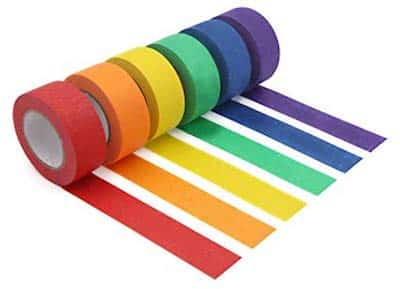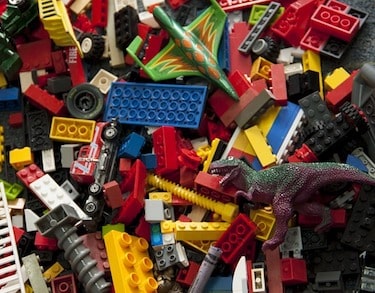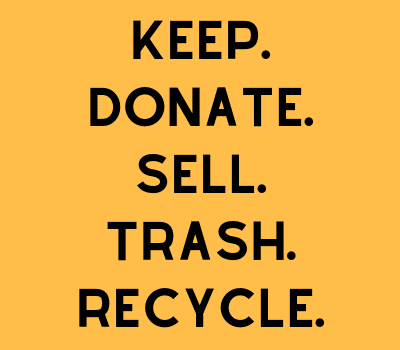 So you’ve made the decision to downsize to a smaller home in Santa Fe. For whatever reasons, your larger home no longer reflects your needs and how you want to live. You may have grown-up children who have really and truly moved out, coming over to visit perhaps with their own kids in tow. You may have rooms and square footage you’re not using—but still cleaning, heating, and maintaining. You are ready—so ready—to live in a smaller space.
So you’ve made the decision to downsize to a smaller home in Santa Fe. For whatever reasons, your larger home no longer reflects your needs and how you want to live. You may have grown-up children who have really and truly moved out, coming over to visit perhaps with their own kids in tow. You may have rooms and square footage you’re not using—but still cleaning, heating, and maintaining. You are ready—so ready—to live in a smaller space.
You may be ready to downsize to a smaller home, but your household belongings may not be. Check out our eight strategies for decluttering before you make the move to a smaller space.Downsizing to a smaller home is a big endeavor that takes planning, effort, and persistence. If you’ve lived in your current home for 20 years or more, there’s a good chance that every closet, cabinet, and storage space holds items that are no longer needed or used. That kid-sized snowboard. Those mystery electronics. That—you get the idea.
And that’s not counting superfluous furniture like extra beds and bureaus. Or kitchen equipment you no longer use or have upgraded. Downsizing to a smaller home means downsizing your possessions before you move. And that means you’ll need to go on a decluttering mission as never before.
Downsizing is a goal. Decluttering can be a time-sucking process not for the faint-hearted.
We know one homeowner who spent six months of full-time effort paring down possessions in a move from a four-bedroom suburban home to a two-bedroom city apartment. We know another homeowner who took a week to bag up thousands of LEGO bricks only to learn they’re made from non-recyclable plastic. (More on that later.)
It’s a no-brainer to declutter before you move to a smaller home. After all, you can’t fit 3,000-plus-square-feet of belongings into a smaller space. The big question is HOW. It’s more complicated than you think. You need a plan. And you need time.
1. Figure Out Your Timeline
Your decluttering timeline might be leisurely or it might be super short to due an actual move date you need to hit. You are the only one who will know how much time you’ll have. Establish that timeframe to figure out your start an end date.
If your timeline is short—say, three to six months—you’ll need to work on decluttering as often as you can. If you’re in no particular hurry, then of course you can take your time, but try to tackle it every weekend.
2. Embrace the Mantra
The decluttering mantra, we mean. Repeat after us: Keep. Donate. Sell. Trash. Recycle. Everything you own will have to be placed in one of those categories.
What to Keep
First of all, resist the urge to keep items that really serve no current purpose in your life. Resist the urge to keep items you might use “someday.” If you own clothing, for instance, that you haven’t worn for a year or more, then it’s likely you won’t suddenly start using them.
The “keep” category will include items you use every day or regularly—obvious items like your bed, for example. You’ll also want to keep items that have emotional value. Or financial value. Actually, we don’t need to tell you what items to keep. That’s something you will know or decide on your own.
We should talk about the “replace” part, however. You may need to replace certain items you own now, but that won’t fit into a smaller space. A large dining room table, for example. Or perhaps oversized furniture not suited to a smaller room.
What Do with Everything Else
If you’re not keeping it, you will need to donate, sell, trash or recycle it. This might include items you own now, but that won’t fit into a smaller space. A large dining room table, for example. Or perhaps oversized furniture not suited to a smaller room.
Start with Low-Hanging Fruit
Focus on items you no longer use that you’ve had for the longest period of time. We mean the stuff that’s in your closets, attics, basements, garages, and storage areas. This might include sports equipment, toys, baby gear, board games, clothing, home electronics, and decor. It’s stuff you no longer use, but it’s useable condition. Also in this category are items that are broken or in less-than-good condition.

Apply the keep/donate/sell/trash/recycle guideline to items in these areas, then move to other parts of the house. Going room-by-room is the most efficient.
Use colored painter’s tape or low-residue masking tape to identify items that fall into the keep/donate/sell/trash/recycle categories. Pick a color for each category and make sure all family members know which is which.
3. Involve Family Members
Be sure to consult family members as you go through the decluttering process. Whether or not they live under your roof, let them know when the process will start and end. It’s important to ask family members before you put items in one of the decluttering categories. You may even need to invent another category, such as “Keep for Steven”—with the understanding that Steven will need to TAKE those designated items by a certain date.
Here’s where decluttering an entire house prior to a move can make you crazy. For items belonging to family members—like old toys or sports gear—it’s impractical to have to ASK someone whether to keep, sell, donate, trash, or recycle every single item. On the other hand, skip asking and you may have to face questions like, “Did you get rid of my baseball cleats?” (Answer: Yes.) Use these tips to help manage the process:
- Establish some ground rules. Such as: “It’s OK to donate my old Beanie Babies, but keep the ones with tags and I’ll pick them up.”
- When in doubt, send a photo.
- If possible, have family members assume responsibility for their own spaces and rooms.
4. Find Out Your Community’s Recycle and Trash Guidelines
Be sure you know what and how to recycle and trash. Here are some resources to help you:
- City of Santa Fe Trash and Recycling Guidelines
- City of Santa Fe Glass Recycling Guidelines
- City of Santa Fe Residential Collection Guidelines This includes guidelines for large Items like furniture and appliances.
- Santa Fe County Recycling Information
- Santa Fe County Solid Waste and Recycling
- Santa Fe County Re-Use Area at the Eldorado Convenience Center
5. Find Out What You May Donate
Before you tag items for donation, make sure you have a place that will accept them. You may load up the car and head to one of Santa Fe’s Goodwill locations only to find out they don’t accept televisions. Here’s a list of what Santa Fe’s Goodwill accepts and not accepts.
6. Consider Freecycling
Santa Fe has a Freecycle Network group where you can find new homes for reusable items. Membership in this grassroots organization is free and provides a great way for Santa Fe area residents to reduce landfill waste.
7. Learn About Toy Recycling
It can be a challenge to dispose of unwanted toys. Some donation centers won’t accept used toys. Broken toys are almost never accepted as donations. And it may not be possible to throw out certain toys. There are a number of ways to recycle old toys. LEGOs, however, are a special challenge because they are made of non-recyclable plastic. Here are some resources that may help—including an organization that accepts used LEGOs.
Earth911’s Toy Recycling Guidelines
Life Hacker’s How to Donate or Sell Used LEGOs
Brick Recycler This San Jose, CA, the organization accepts used LEGOs, which are then donated to charities.
8. Set Yourself Up to Sell
Craigslist and Ebay are the main ways to sell your stuff online. In the real world, options include consignment shops and yard sales. Check with your local government to find if a permit is needed for a yard sale.
9. Follow Your Timeline and Be Persistent
One of the first steps in your decluttering plan was to establish a timeline. Now, you have to stick to it. Put decluttering sessions on your calendar. Involve family members if possible. Once you start, you’ll find that you’ll complete the process in stages. A day will come when you realize you’ve donated all the items marked for donation. Take yourself out to dinner on that day! Then will come a day when you’ve sold the last item earmarked to sell. Bit by bit, you will persevere and achieve your decluttering goal.





Leave A Comment